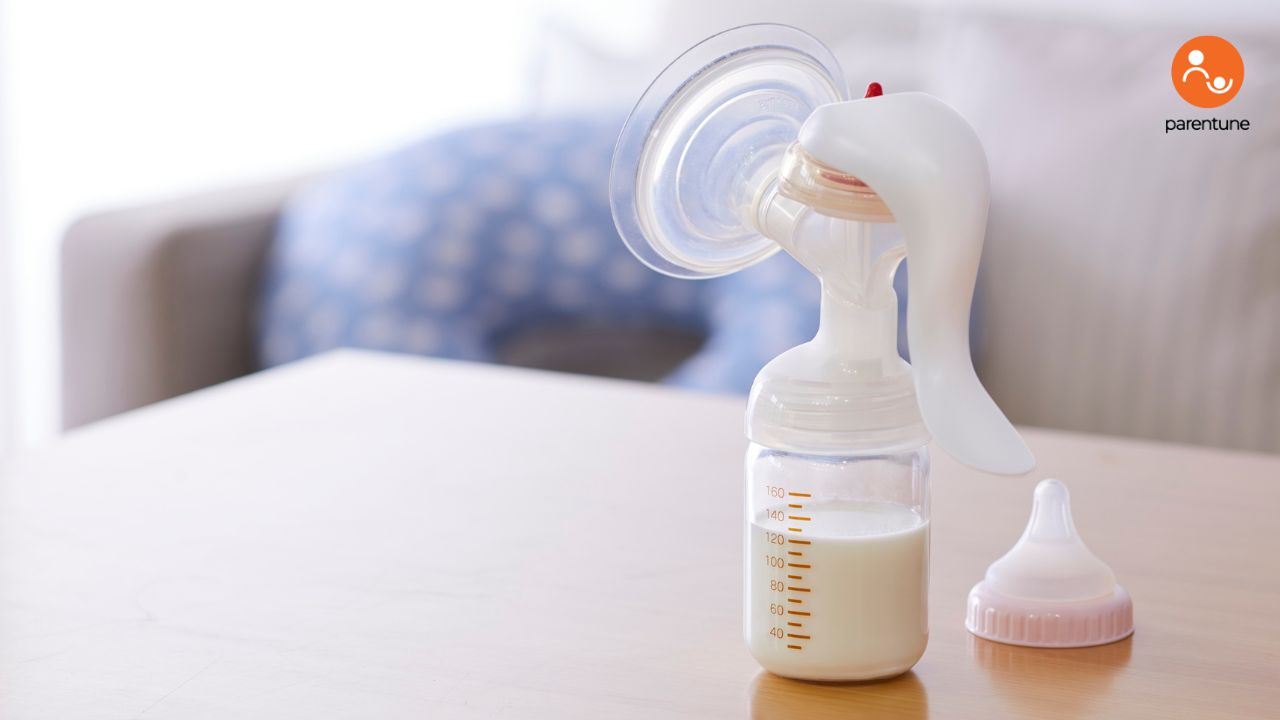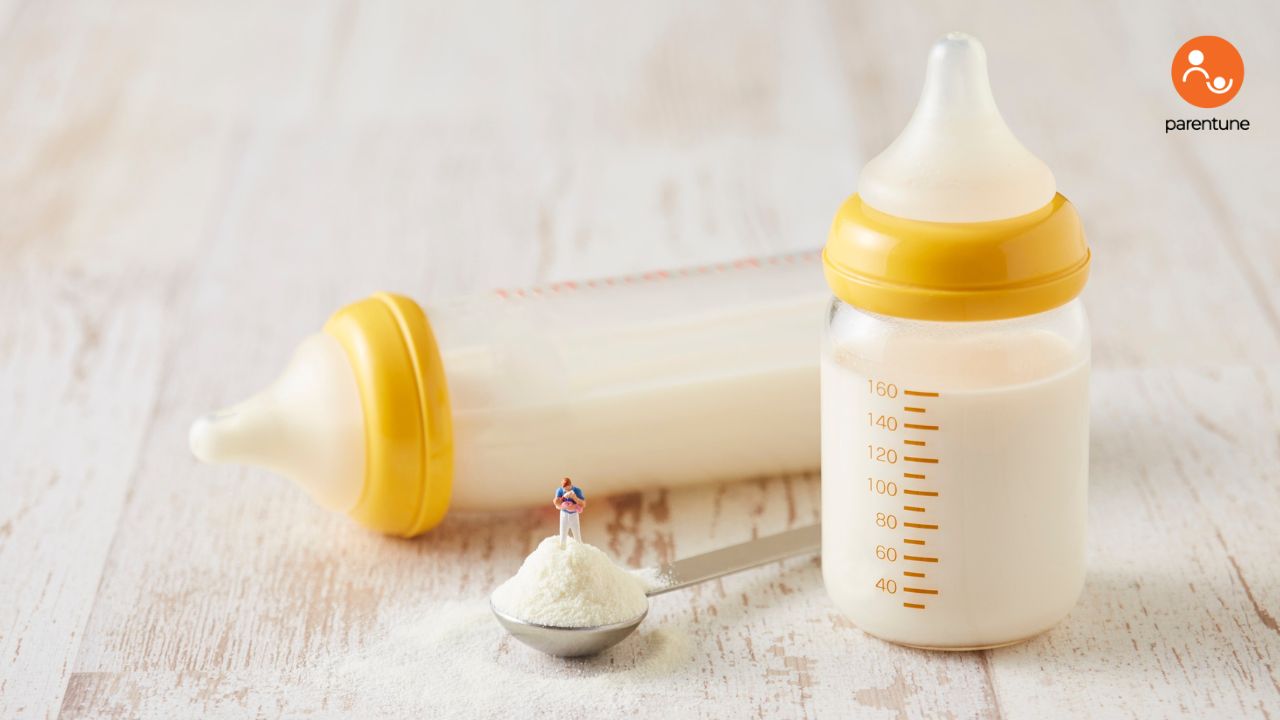breastfeeding
Can You Mix Breast Milk And Formula? What Doctors Say

The modern feeding dilemma starts at 3 a.m.
You’re holding a hungry baby. Your breasts feel a little empty. The formula can is within reach.
And the question arrives, sharp and persistent:
Can I mix breast milk and formula?
Not just in the same day. In the same bottle.
Doctor Q&As from Parents like you
It feels like a small thing. But it’s not.
It’s a proxy for a much bigger struggle — guilt, convenience, nutrition, identity.
So let’s break it down. With science. With compassion. And without judgment.
Why Parents Consider Mixing in the First Place
Because life isn’t binary.
You’re not always in one mode or the other — fully breastfeeding or fully formula-feeding. Real days are messier. You pump when you can. You supplement when you must.
Parents mix for three main reasons:
-
Milk supply dips — especially during growth spurts, illness, or stress
-
Feeding flexibility — so partners or caregivers can help out
-
Returning to work — where pumping isn’t always practical or productive
So, the question becomes:
Is it safe? Is it recommended?
Let’s answer that from a doctor’s lens.

Explore more on this topic
Newborn Feeding Guide: Ounces Per Day By Age
Yes, You Can Mix Breast Milk and Formula — But It’s Not Always Ideal
Pediatricians agree: It’s not dangerous to mix them. But it’s not always preferred either.
Here’s what most neonatologists, lactation consultants, and pediatric dietitians say:
Mixing breast milk and formula in the same bottle is safe — if prepared correctly — but best done only when necessary.
Why?
Because formula and breast milk have different nutrient compositions and digestive behaviors. Breast milk is dynamic, adapting to your baby’s needs. Formula is static — fixed in calories, protein, minerals.
When you mix them in one bottle, you change how the body digests both. Sometimes this can:
-
Alter absorption
-
Create tummy discomfort
-
Introduce hygiene risks if not handled properly
Let’s zoom in.
How to Safely Mix Breast Milk and Formula (If You Need To)
There’s a right way. And a wrong way.
Always follow this sequence:
-
Prepare the formula first using clean, sterilized water — according to the exact manufacturer instructions
-
Then add expressed breast milk to the prepared formula
-
Do not mix breast milk with formula powder directly — this can disrupt the dilution balance and strain your baby’s kidneys
Think of it like making tea: you don’t throw leaves into unboiled water and expect the same results.
Also note:
-
Use the bottle within 1 hour if baby has started feeding
-
Discard leftovers — don’t “save” the mix for later
-
Store pre-mixed formula + breast milk in the fridge only if untouched — max 24 hours
When Mixing Makes Sense — And When It Doesn’t
Mixing may be helpful when:
-
Your baby refuses separate formula feeds but takes a combo
-
You’re running low on pumped milk during a daycare feed
-
You’re transitioning gradually to formula
But avoid mixing when:
-
You’re trying to maximize exclusive breastfeeding (it can reduce demand and lower milk supply)
-
Your baby is immunocompromised or preterm (they may need precise nutrition control)
-
You’re unsure of hygiene, storage, or temperature safety
There’s a third path worth considering.
The “Back-to-Back” Method: An Expert-Approved Alternative
Instead of mixing in the same bottle, many lactation consultants recommend giving:
-
Breast milk first (or a direct nursing session),
-
Followed by a formula top-up in a separate bottle if needed.
Why?
Because it protects breast milk’s benefits — enzymes, antibodies, live cells — without risking dilution or waste. And it teaches your baby to recognize both feeding types distinctly.
It’s not all-or-nothing. It’s sequential. Like a duet instead of a mashup.
Common Myths Around Mixing — And the Truths Behind Them
Let’s address some whispers you might hear in mommy forums or family kitchens.
Myth: “Mixing breast milk with formula cancels out the benefits.”
Fact: False. Breast milk still provides immunological and digestive support, even in combo.
Myth: “Mixing causes constipation or gas.”
Fact: Not always. Digestive reactions vary baby to baby — it’s not the mix, but possibly the formula type or bottle design.
Myth: “It shows you’re giving up on breastfeeding.”
Fact: Absolutely false. Feeding your baby is never a failure. It’s an act of adaptation and love.

What Pediatricians Actually Recommend
Parentune’s pediatric panel — which includes neonatologists, child nutrition experts, and IBCLCs — consistently echoes one philosophy:
“Fed is first. Safe is essential. Informed is empowering.”
So rather than rigid “rules,” they suggest:
-
Mixing only when necessary, not as routine
-
Prioritizing hygiene and storage
-
Watching your baby’s cues more than your feeding label
-
Consulting a pediatrician or certified lactation expert if unsure
You’re not just feeding. You’re decoding a whole new system.
Real Stories, Real Support: Why Community Matters
If you’ve ever stared at a bottle, second-guessing every decision — you’re not alone.
Thousands of Parentune moms have asked this very question.
Some tried mixing once and never again. Others used it to wean or balance work hours.
The beauty of the Parentune community lies in these shared, unfiltered experiences — backed by experts, but driven by real life.
Because Google can give you answers. But stories give you clarity.
The Bigger Picture: Feeding is a Relationship, Not a Recipe
There’s no “perfect” bottle.
What matters more is trust — in your instincts, in your baby, in your ability to adapt.
Yes, the science matters. But so does the soul of it.
A well-fed baby is not defined by the percentage of formula in their feed.
They’re defined by the comfort, responsiveness, and presence in their feeding journey.
So if you’re asking — Can I mix breast milk and formula?
The answer is yes.
But the better question might be — What works best for my baby, in this moment, with what I have?
That’s where the real wisdom lives.
And that’s exactly what Parentune stands for.
TL;DR? Here's the Core Wisdom
-
Yes, you can mix breast milk and formula safely — if prepared correctly
-
Prepare formula first, add breast milk after
-
Don’t mix powder and breast milk directly
-
Watch your baby’s response — digestion, comfort, and appetite matter most
-
Back-to-back feeding is a gentle alternative
-
And above all — you’re not doing it wrong. You’re just doing what’s needed.
Want more answers that don’t sound robotic?
Join the Parentune community — a space where expert knowledge meets real-life parenting.
Because feeding questions deserve more than just facts.
They deserve understanding.
Be the first to support
Be the first to share
Related Blogs & Vlogs
No related events found.